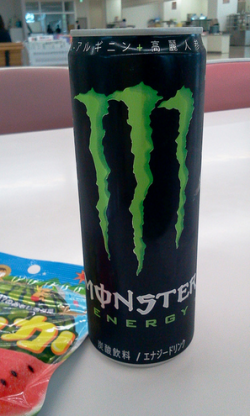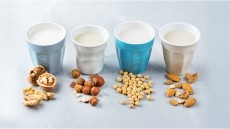Becoming a Japanese energy drink Monster isn’t easy…

Reporting Monster’s Q2 results for Q2 ending July 30, CEO and chairman Rodney Sacks noted US energy category sales growth of 16.5% year-over-year (down slightly on Q1) and overall EMEA net sales up 51.6%.
Sacks said that Monster continued to take share in the US and grow – especially in light of sluggish CSD volumes, while European markets were “starting to kick” and Asia was an encouraging long-term prospect.
Total net sales were up 28.2% to $592.6m, and operating income up 28.1% to $169.8m; net sales to customers outside the US were $124.4m, compared to $78.1m in Q2 2011.
Nielsen US data for the 13 weeks to July 21 – across convenience, grocery, drug and and mass merchandisers – showed dollar sales of energy drinks up 16.5% versus Q2 2010; Canada sales were up 11%.
US sales of Monster grew 24.9%, while sales of Red Bull rose 19.3% and Rockstar rose 7.2% and 5-Hour sales rose 4.2%. Sales of Amp (PepsiCo) fell 2.4%, NOS (Coke) rose 13.8% and Full Throttle (Coke) was up 6.5%.
Across all channels, ‘energy plus coffee’ drinks rose 21.7% in dollar value compared to Q2 2011, with Java Monster up 20.2%, hot on the heels of Starbucks Double Shot energy (20.9%).
Exports lost in translation
Discussing Monster Energy’s expansion strategy, Sacks mentioned launches in Ecuador, Hong Kong, Japan, Macau and Slovenia in Q2 2012, with launches in Chile, Peru, Singapore, Taiwan and the Philippines due later in 2012.
But he admitted a planned South Korean launch had been delayed due to ongoing product approval and labeling issues; this issue, along with product damages in Japan cut gross profit margins from 52.8% in Q2 2011 to 51.8% this year.
Sacks declined to tell analyst Mark Astrachan from Stifel, Nicolaus & Co. (on a later call) how much these issues cost Monster, but said the Japanese issues related to can defects – potentially reclaimable from suppliers – including tab issues, and leakages during shipping.
“What we’ve experienced is that the tolerance of Japanese distributors and retailers is at a very different level to the US…I mean, literally every can is inspected one by one,” Sacks said.
“If you three cans which have leakers, out of 1m cans in America, the local stores throw them away. Here [Japan] there is an investigation with 200 people involved from all over the world in trying to get to the bottom of that…analytical and very precise.”
Phantom caffeine causes South Korean hiatus?
Meanwhile, in Korea, Sacks said that products sent to that market were analyzed incorrectly, in picking-up an ingredient forbidden there – but used by Monster elsewhere in the world – that the firm had taken out.
“We actually had mass spec[trometry] tests done in the US as well as Korea. We’ve established without any doubt that there wasn’t any of the ingredient in the product. But…it disrupted everything for six months.”
Due to time difference issues, BeverageDaily.com was unable to contact the Korean Food & Drug Administration (KFDA) or Monster to clarify the identity of the mystery ingredient.
But the current Korea Food Additives Code states: “Natural caffeine and the use and preparation containing it should only be limited to cola-type beverages. The level of usage should not be more than 0.015% as caffeine.”
The EU Chamber of Commerce in Korea (EUCCK) recommended in 2010 that this code be updated to allow caffeine up to 320ppm (0.032%) for use in beverages including energy drinks; the KFDA replied that it would continue to monitor international developments regarding caffeine-containing energy drinks.













